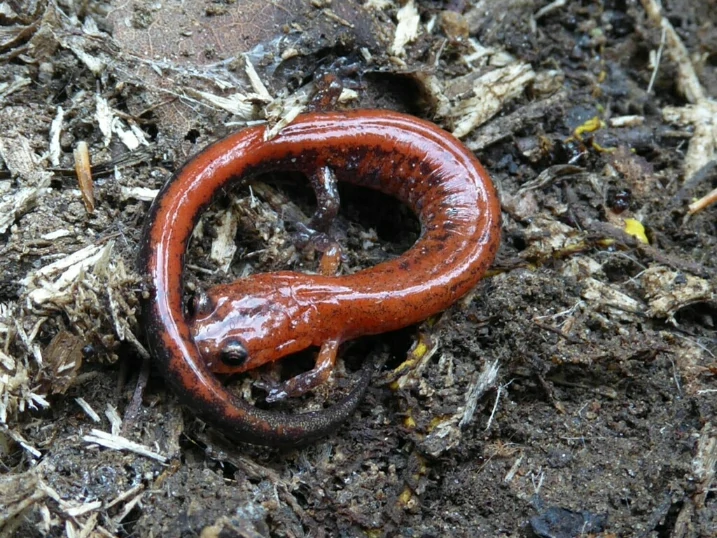If you spend time gardening, you might have seen a small, slim creature quietly slipping through soil or hiding under a flowerpot. Salamanders often show up in damp garden spots or shady corners. This makes many wonder: are salamanders good for the garden?
Salamanders are very good for gardens. They help control pests, support soil health, and show that the environment is healthy. Salamanders eat insects and other small creatures that can hurt plants. They also tell you your garden has enough moisture and cover to support wildlife.
What Do Salamanders Do in the Garden?
Salamanders don’t dig or eat plants. They don’t chew roots or tear up soil. Instead, they quietly move around the ground looking for food.

In gardens, salamanders:
- Hunt insects, slugs, and other small animals
- Hide in mulch, under rocks, or inside logs
- Come out during damp evenings or after rain
- Stay near moist, shaded places
Because they’re secretive and mostly active at night, most people don’t see them. But their impact on your garden is real and helpful.
Natural Pest Control
One of the biggest benefits of salamanders in the garden is their appetite for pests. Many of their favorite foods are common garden troublemakers.

Salamanders eat:
- Slugs and snails
- Insect larvae
- Ants
- Beetles
- Aphids
- Earwigs
- Spiders
- Centipedes
By keeping pest numbers low, salamanders protect tender plants, seedlings, and vegetables. Unlike chemicals, they do this without hurting pollinators, soil health, or the whole ecosystem.
They’re especially useful in organic gardens where natural pest control matters.
Signs of a Salamander-Friendly Garden
Salamanders only live well in certain places. If they show up in your yard, it means your garden has good natural resources.
Things that attract and support salamanders include:
- Moist soil with lots of organic cover
- Shade from trees, shrubs, or buildings
- Mulch, leaf litter, and fallen wood
- Cool, damp hiding spots
- Ponds, birdbaths, or water features
Salamanders like calm, quiet places with little disturbance. A garden full of insects and safe from heavy foot traffic offers salamanders a steady food source and safe home.
Soil Health and Salamander Presence
Good soil is key to a thriving garden. Salamanders don’t dig or turn soil, but having them around supports healthy soil life.
Studies show that by eating invertebrates, salamanders help:
- Stop harmful soil creatures from taking over
- Balance tiny microbial communities
- Lower the need for harsh pest control
- Keep compost and mulch from being swarmed by pests
In this way, salamanders help keep soil alive, hold moisture, and reduce plant diseases. They’re part of the underground web that makes gardens grow strong.
Do Salamanders Harm Plants?
No. Salamanders don’t eat plants, dig roots, or harm leaves.

They only eat animals. Even if there are many salamanders, they won’t hurt vegetables, flowers, or landscaping. They don’t bite, chew, or climb like some garden pests.
Unlike rodents or certain bugs, salamanders are completely safe for plants. Their only effect is good, by controlling pests and lowering the need for sprays or traps.
Coexisting with Salamanders in Your Yard
Salamanders are quiet neighbors and don’t bother people or pets. They’re not poisonous and won’t attack. Usually, they freeze or run away if disturbed.
To live safely with salamanders:
- Avoid using pesticides and herbicides
- Leave leaf litter or wood in shady spots
- Limit mowing or digging in salamander areas
- Add shallow water features for amphibians
- Use soft lighting; salamanders like darkness
With simple steps, your garden can be a welcome home for these helpful animals.
Garden Practices That Harm Salamanders
Some common actions can hurt or scare salamanders away.
These include:
- Heavy pesticide use, which harms amphibians and their food
- Removing all leaf litter, mulch, or wood debris
- Draining or filling natural water spots
- Compacting soil by overwatering or machines
- Letting pets dig in garden beds
Salamanders breathe through their skin and need steady conditions. Chemicals can wipe them out quickly.
Knowing their needs helps protect these valuable friends.
Should You Try to Attract Salamanders?
If your garden is right, salamanders may come on their own. It’s not needed or legal to bring them from the wild.
You can make a salamander-friendly space by:
- Adding logs or flat stones in shady areas
- Building small water basins with gentle slopes
- Letting part of your yard stay wild and moist
- Creating paths between beds and natural areas
You don’t need many salamanders to see benefits. Even a few can help control pests and keep your garden healthy.
Are Salamanders Safe to Have Around?
Yes. Salamanders are harmless to people, pets, and plants.
They produce mild skin secretions for defense, but these aren’t dangerous unless eaten. It’s smart to wash your hands after handling them, just like after working in soil.
They don’t bite, spread diseases, or damage property. Their presence shows your garden is safe and thriving.
Teaching kids to watch but not touch salamanders keeps both animals and your ecosystem safe.
Conclusion
So, are salamanders good for the garden?
Yes, salamanders are great helpers. They control pests, improve soil health, and support wildlife without harming plants or needing much care. Their presence means your garden has the right moisture, shelter, and natural balance.
By making room for salamanders and protecting their homes, you help your garden grow stronger and healthier.
In a world where many want chemical-free solutions, salamanders might be one of your garden’s most useful and overlooked helpers.
Hi, my name is Ezra Mushala, i have been interested animals all my life. I am the main author and editor here at snakeinformer.com.

